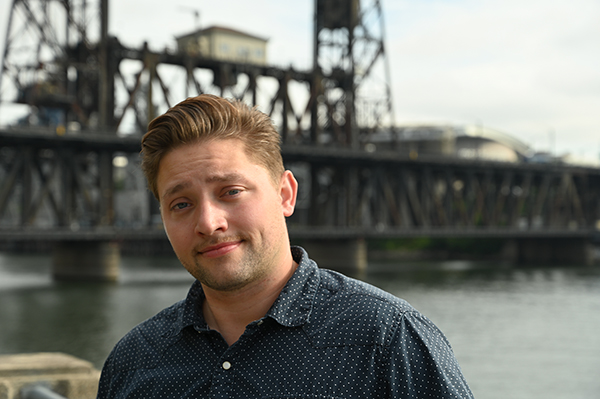GreenWorks Welcomes Chris Weaver
/Chris Weaver recently joined our team after working with us on the Port of Vancouver Terminal 1 Mixed Use project and finishing a master’s degree at the University of Oregon.
GW: You used to be a field research photographer, what was that job like? Do you have any good stories?
CW: I loved that job. It had me driving throughout Portland and photo-documenting every commercial property—so I was essentially paid to explore the city. Unfortunately, this also had me inadvertently photographing and sketching out a lot of people that were in the building shots. No doubt a few people mistook me for an operative of some vague and menacing government agency.
GW: Why did you choose to study landscape architecture?
CW: I was mainly led by a desire to create and affect a noticeable change in the world. To me, landscape is an especially alluring artistic medium because of its dynamism. Its complexity offers so many opportunities to create something unique and beautiful that also has real consequences.
GW: The year you retire, what do you think the big ideas in landscape architecture will be?
CW: I don't intend on retiring until 2050 or so—perhaps by then the idea of the arcology will catch on. Early in school I was inspired by the Arcosanti arcology experiment and other conceptual work by Paolo Soleri. His designs were grandiose and massively scaled, to the point they were wholly unrealistic. But in the near future, I could envision the implementation of some variation of high-density development that deeply integrates management of natural systems and resources like arcologies were proposed to do. I also think in the most dire of future scenarios, innovations in landscape architecture could be vital to managing global resource scarcity problems.
GW: Do you have any fun hobbies? What keeps you busy when you’re not at work?
CW: I used to have hobbies, but now I’m a father and a homeowner. So I’m mostly occupied by projects, playdates, and dance recitals. But whenever possible, I enjoy backpacking, camping, and at home I play fingerstlye guitar. I also sculpt in a variety of materials and usually have multiple ongoing art projects at any given time.
GW: What’s the best advice anyone ever gave you?
CW: I’m paraphrasing here, but the gist of the advice was: “If compassion were easy, then it wouldn’t be a virtue.” This advice gave me the imperative to view people differently and work to better myself. Compassion and compromise does not always come readily, and being conscious of this adage allows me to forgive myself when I find that I’m being selfish. In turn, I find it easier to move past my hang-ups and improve my outlook.



